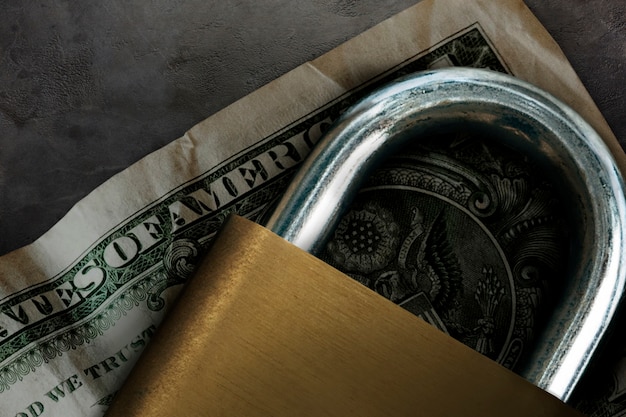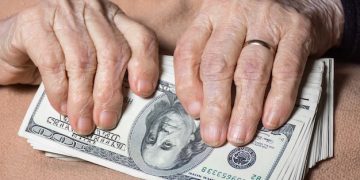Federal Reserve Rate Hike: Consumer Impact & Financial Strategies

The Federal Reserve’s fourth interest rate increase this year impacts consumers through higher borrowing costs for mortgages, credit cards, and loans, while also potentially increasing savings account yields.
The Federal Reserve announces fourth interest rate increase this year: what it means for consumers. This move, while aimed at curbing inflation, has ripple effects that touch nearly every aspect of personal finance.
Understanding the Federal Reserve’s Decision
The Federal Reserve, often referred to as the Fed, plays a crucial role in managing the US economy. Its primary tool is the federal funds rate, which influences borrowing costs throughout the country. When the Fed raises this rate, it becomes more expensive for banks to borrow money, and these costs are passed on to consumers and businesses.
This year’s fourth interest rate hike is a significant development, signaling the Fed’s determination to combat inflation. Inflation, which refers to the rising prices of goods and services, can erode purchasing power and destabilize the economy. However, the Fed’s actions can have both intended and unintended consequences.

Why the Fed Raises Interest Rates
The Fed raises interest rates primarily to cool down an overheating economy and curb inflation. When the economy is growing too rapidly, demand for goods and services can outstrip supply, leading to rising prices. By increasing borrowing costs, the Fed aims to reduce spending and investment, thereby slowing down economic growth and easing inflationary pressures.
This is a delicate balancing act. If the Fed raises rates too aggressively, it risks triggering a recession, which is a period of economic contraction and job losses. On the other hand, if it waits too long to act, inflation can become entrenched, making it more difficult to control in the future.
- Controlling Inflation: The primary goal is to bring inflation back to the Fed’s target range.
- Slowing Economic Growth: Higher rates discourage borrowing and spending, moderating economic activity.
- Maintaining Price Stability: The Fed aims to keep prices stable to promote long-term economic health.
In summary, the Federal Reserve’s decision to increase interest rates is a complex calculation aimed at balancing the goals of controlling inflation and maintaining economic stability.
Impact on Mortgages and Home Buying
One of the most immediate and visible effects of a Federal Reserve rate hike is on mortgage rates. As the Fed raises the federal funds rate, mortgage rates tend to follow suit, making it more expensive to buy a home. This can have a significant impact on both potential homebuyers and the housing market as a whole.
For prospective buyers, higher mortgage rates translate into higher monthly payments, reducing affordability. This can force some buyers to delay their home purchase or look for less expensive properties. For the housing market, rising rates can lead to a slowdown in sales and a cooling of price appreciation.
How Rate Hikes Affect Mortgage Rates
Mortgage rates are not directly controlled by the Federal Reserve, but they are heavily influenced by the central bank’s actions. When the Fed raises the federal funds rate, it increases the cost of borrowing for banks, which in turn pass on those costs to consumers in the form of higher mortgage rates.
The impact of rate hikes on mortgage rates can vary depending on factors such as the overall economic outlook, investor sentiment, and the supply and demand for mortgages. However, in general, rising rates tend to push mortgage rates higher, while falling rates tend to lower them.
- Increased Monthly Payments: Higher rates mean larger mortgage payments, impacting affordability.
- Cooling Housing Market: Rising rates can reduce demand and slow down price appreciation.
- Refinancing Impact: Existing homeowners may find it less attractive to refinance their mortgages.
In conclusion, Federal Reserve rate hikes have a direct and significant impact on mortgages and the housing market, affecting affordability and demand.
Credit Card Interest Rates and Debt
Beyond mortgages, Federal Reserve rate hikes also have a significant impact on credit card interest rates and debt. Credit cards typically have variable interest rates, which means they are directly tied to benchmark rates like the prime rate, which moves in tandem with the federal funds rate.
As the Fed raises rates, credit card interest rates tend to increase, making it more expensive to carry a balance. This can be particularly problematic for consumers who are already struggling with debt, as higher interest rates can make it more difficult to pay off their balances and can lead to a cycle of debt.
Strategies for Managing Credit Card Debt
With rising credit card interest rates, it’s more important than ever to manage credit card debt effectively. There are several strategies consumers can use to minimize the impact of rate hikes on their credit card balances.
One common strategy is to transfer balances to a lower-interest credit card. Many credit card companies offer introductory rates for balance transfers, which can provide a temporary reprieve from high interest charges. Another strategy is to consolidate debt with a personal loan, which typically has a lower interest rate than credit cards.
- Balance Transfers: Move balances to cards with lower introductory rates.
- Debt Consolidation Loans: Combine multiple debts into a single loan with a lower rate.
- Budgeting and Payment Strategies: Create a budget and prioritize paying down high-interest debt.

In short, Federal Reserve rate hikes increase credit card interest rates, underscoring the importance of managing debt and adopting strategies to minimize interest charges.
Savings Accounts and Investments
While rising interest rates can be a burden for borrowers, they can also be a boon for savers. As the Federal Reserve raises rates, banks and other financial institutions may increase the interest rates they pay on savings accounts, certificates of deposit (CDs), and other savings products.
For consumers who have cash savings, higher interest rates can provide an opportunity to earn more on their deposits. This can be particularly beneficial for retirees or others who rely on fixed income investments to supplement their income. However, it’s important to note that the increase in savings rates may not always keep pace with inflation.
Maximizing Returns on Savings
To maximize returns on savings in a rising interest rate environment, consumers should shop around for the best rates and consider different types of savings products. Online banks and credit unions often offer higher interest rates than traditional brick-and-mortar banks.
CDs can also be an attractive option, as they typically offer higher interest rates than savings accounts in exchange for locking up your money for a fixed period of time. However, it’s important to consider the potential for further rate increases before committing to a long-term CD.
In conclusion, rising interest rates can provide an opportunity for savers to earn more on their deposits, but it’s important to shop around and consider different savings options.
Impact on Business and the Economy
The Federal Reserve’s interest rate decisions not only affect consumers but also have a broad impact on businesses and the economy as a whole. Higher interest rates can increase borrowing costs for businesses, which can lead to reduced investment and hiring. This can slow down economic growth and potentially lead to job losses.
However, the Fed’s goal is to strike a balance between controlling inflation and maintaining a healthy economy. If inflation is left unchecked, it can erode business profits and lead to economic instability. By raising rates, the Fed aims to create a more stable and sustainable economic environment in the long run.
Economic Indicators to Watch
To understand the full impact of the Fed’s rate hikes, it’s important to monitor key economic indicators such as GDP growth, inflation, and unemployment. These indicators can provide insights into the overall health of the economy and the effectiveness of the Fed’s policies.
For example, if GDP growth slows significantly after a series of rate hikes, it may indicate that the Fed is tightening monetary policy too aggressively. On the other hand, if inflation remains stubbornly high despite rate hikes, it may suggest that the Fed needs to take further action.
- GDP Growth: Tracks the overall health and growth rate of the economy.
- Inflation Rate: Measures the rate at which prices are rising for goods and services.
- Unemployment Rate: Indicates the percentage of the labor force that is unemployed.
Ultimately, the Federal Reserve’s interest rate decisions have far-reaching consequences for both consumers and businesses, shaping the overall economic landscape.
Strategies for Consumers Amidst Rate Hikes
In light of the Federal Reserve’s fourth interest rate increase this year, consumers need to be proactive in managing their finances and adapting to the changing economic environment. There are several strategies that individuals can employ to mitigate the impact of rising rates on their wallets.
One key strategy is to review your budget and identify areas where you can cut back on spending. This may involve reducing discretionary expenses, such as dining out or entertainment, or finding ways to save on essential expenses, such as groceries or transportation.
Financial Planning for the Future
It’s also important to review your financial goals and make adjustments as needed. For example, if you’re planning to buy a home, you may need to adjust your budget and savings plan to account for higher mortgage rates. If you’re saving for retirement, you may need to increase your contributions to take advantage of higher interest rates on savings products.
In addition, consumers should consider consulting with a financial advisor to get personalized guidance on how to navigate the current economic environment. A financial advisor can help you develop a comprehensive financial plan that takes into account your individual circumstances and goals.
In summary, amidst Federal Reserve rate hikes, consumers should prioritize budgeting, financial planning, and seeking professional advice to adapt and thrive in the changing economic landscape.
| Key Point | Brief Description |
|---|---|
| 🏠 Mortgage Impact | Higher rates increase mortgage costs, affecting affordability. |
| 💳 Credit Cards | Interest rates on credit cards rise, increasing debt costs. |
| 💰 Savings Benefits | Savings accounts may offer higher interest rates. |
| 💼 Business Impact | Businesses face higher borrowing costs, potentially slowing growth. |
Frequently Asked Questions (FAQ)
▼
The Federal Reserve raises interest rates to combat inflation by making borrowing more expensive, which helps slow down economic growth and reduce price pressures.
▼
Interest rate hikes typically lead to higher mortgage rates, increasing the cost of buying a home and potentially cooling down the housing market.
▼
Consider balance transfers to lower-interest cards or debt consolidation loans to reduce interest charges. Budgeting and paying down high-interest debt is also crucial.
▼
Yes, rising rates can lead to higher interest rates on savings accounts and CDs, providing an opportunity to earn more on your deposits.
▼
Rate hikes increase borrowing costs for businesses, which can lead to reduced investment, hiring, and potentially slower economic growth.
Conclusion
In conclusion, the Federal Reserve’s fourth interest rate increase this year has wide-ranging implications for consumers, affecting everything from mortgages and credit cards to savings accounts and the overall economy. By understanding these impacts and implementing proactive financial strategies, consumers can navigate the changing economic landscape and position themselves for long-term financial success.






